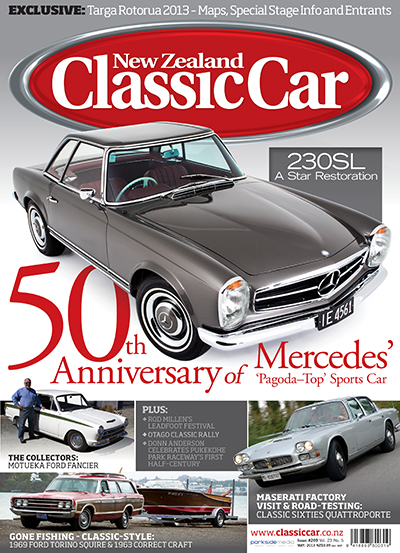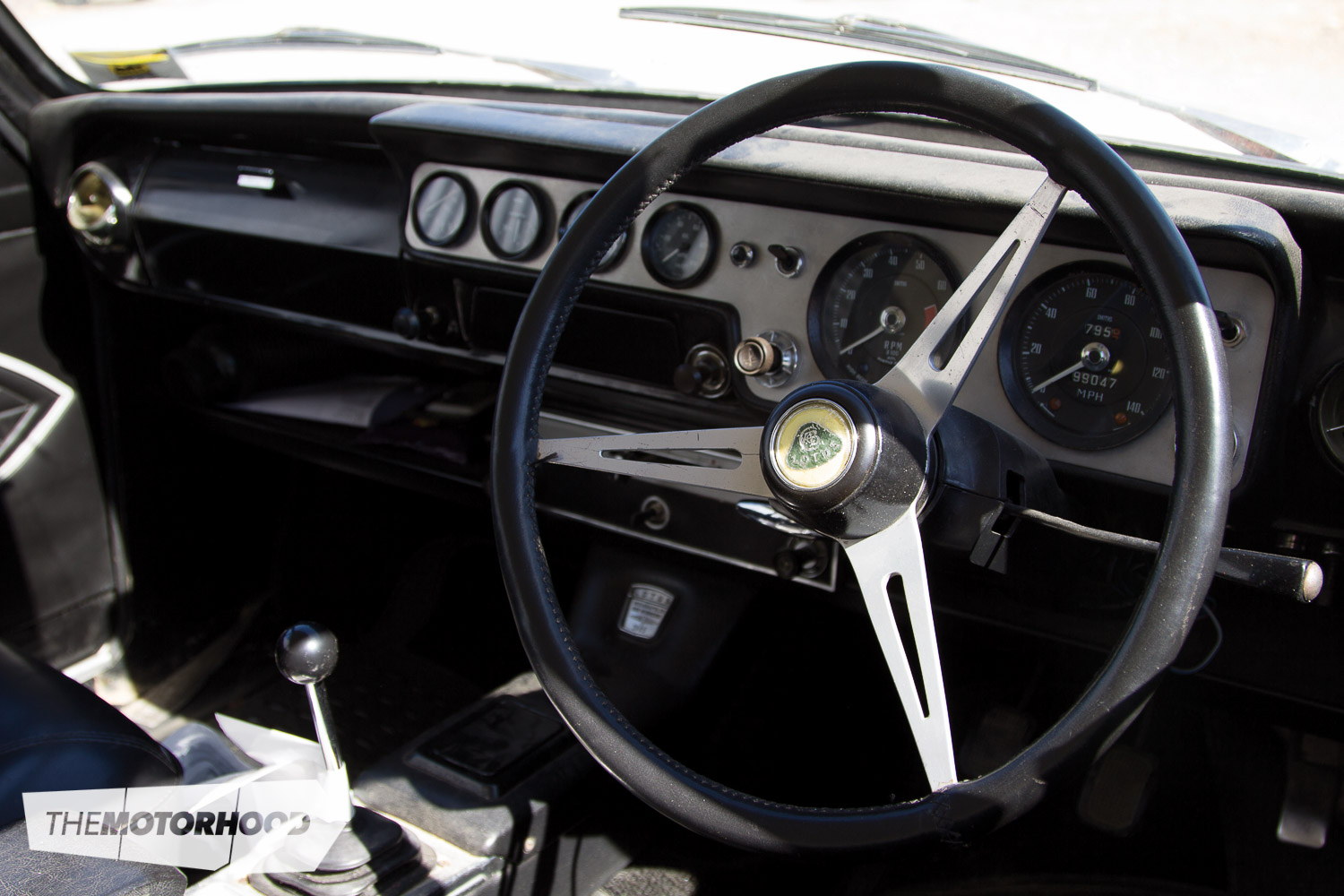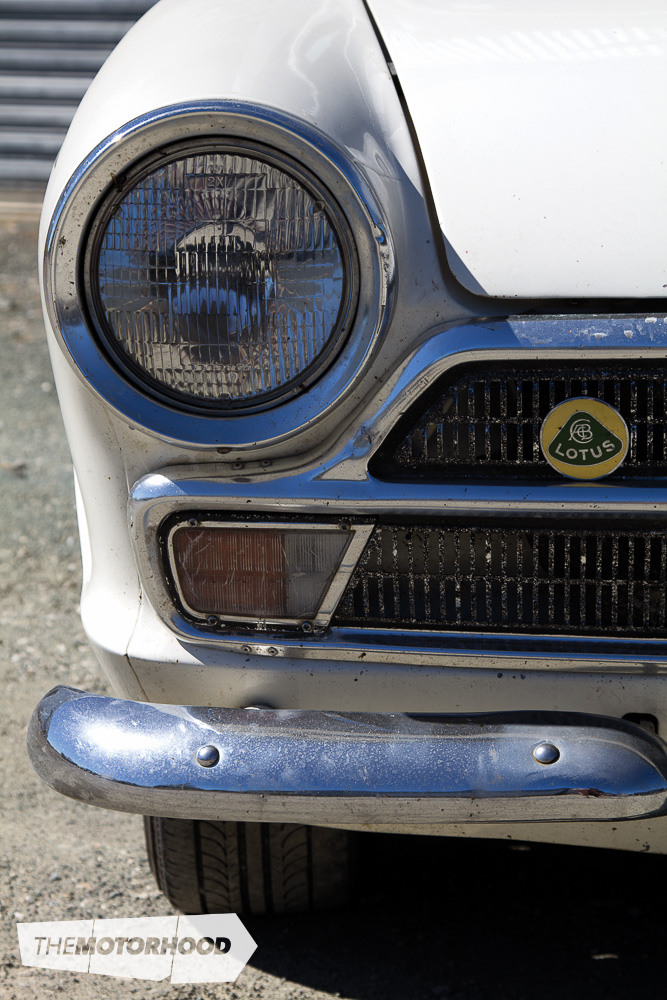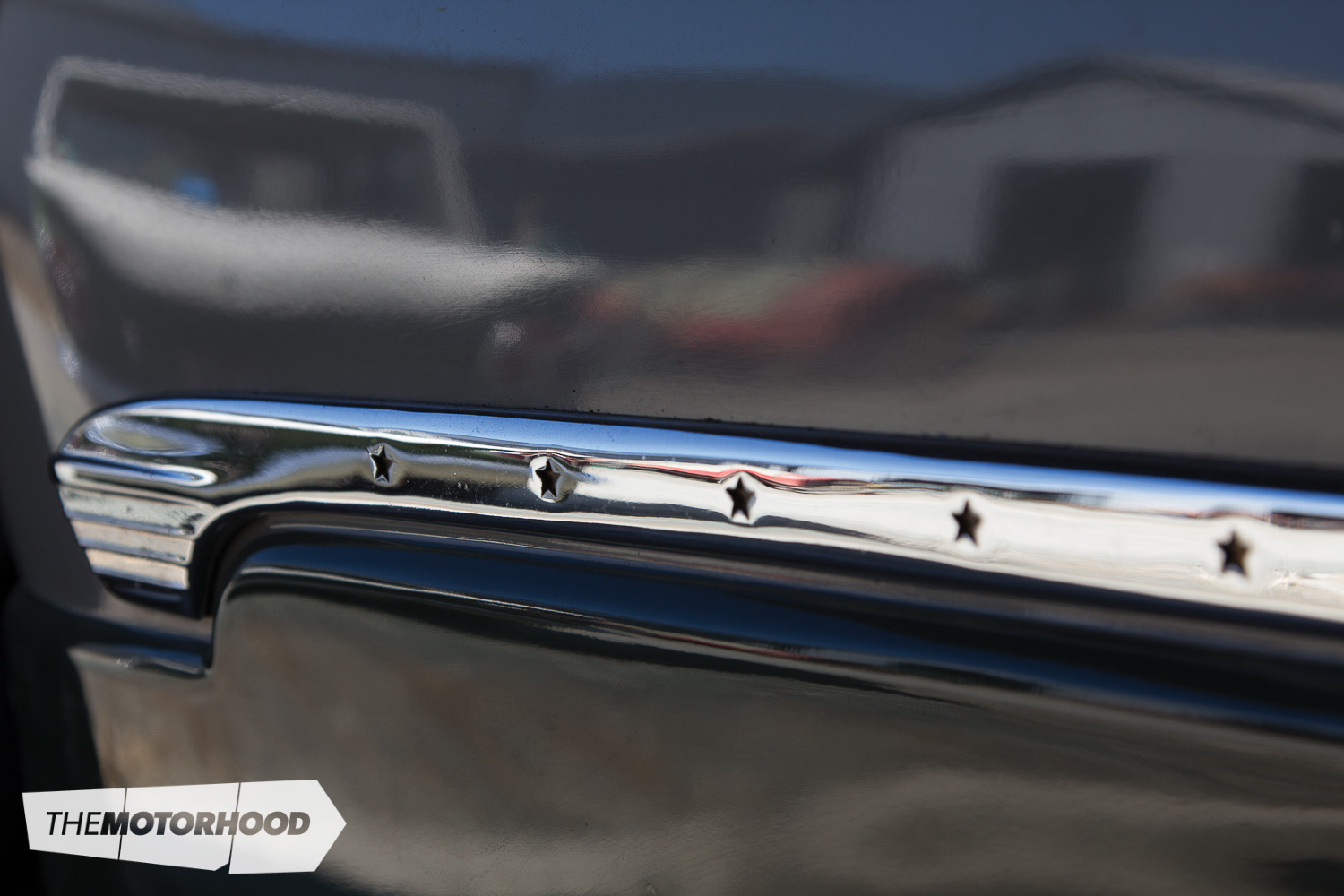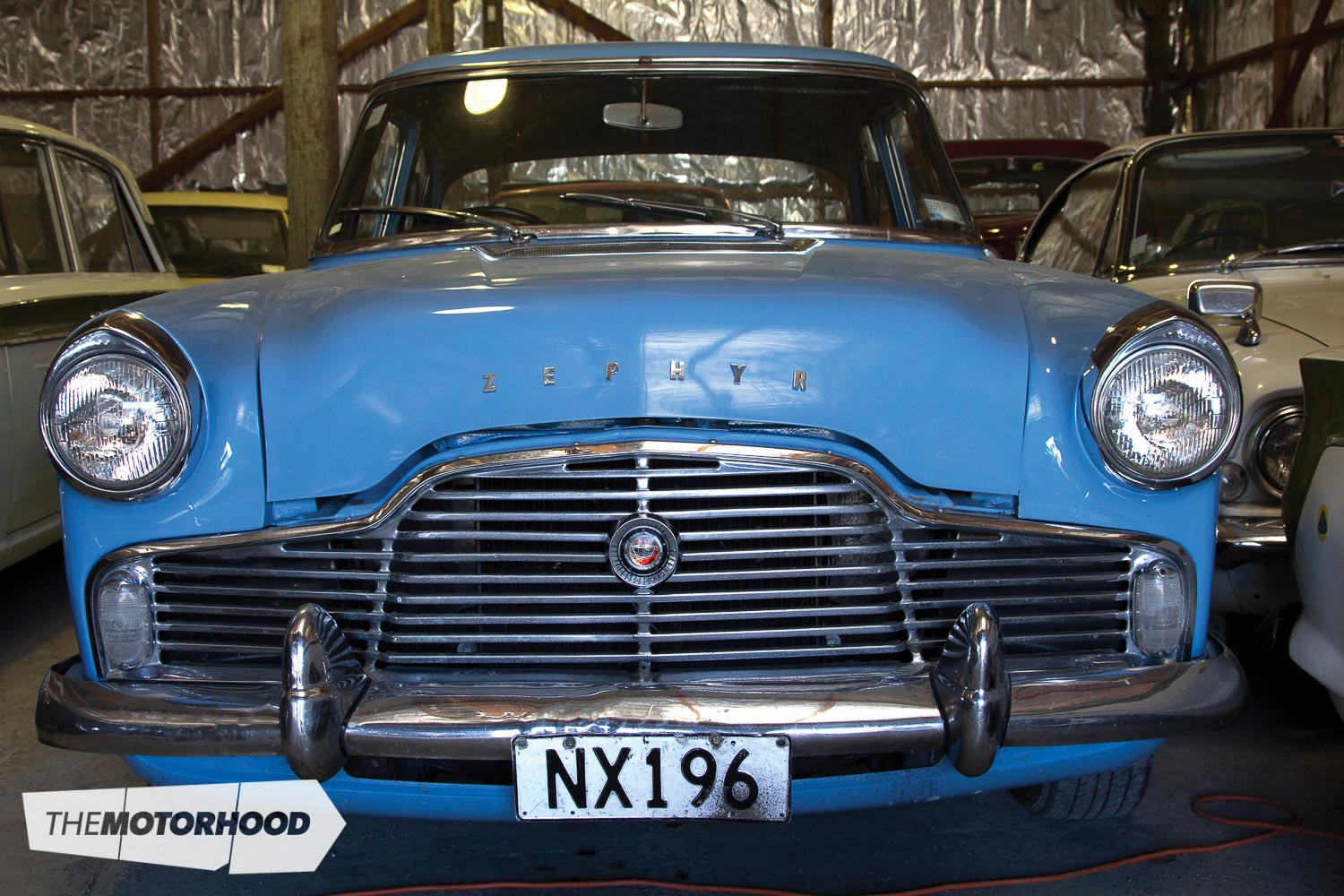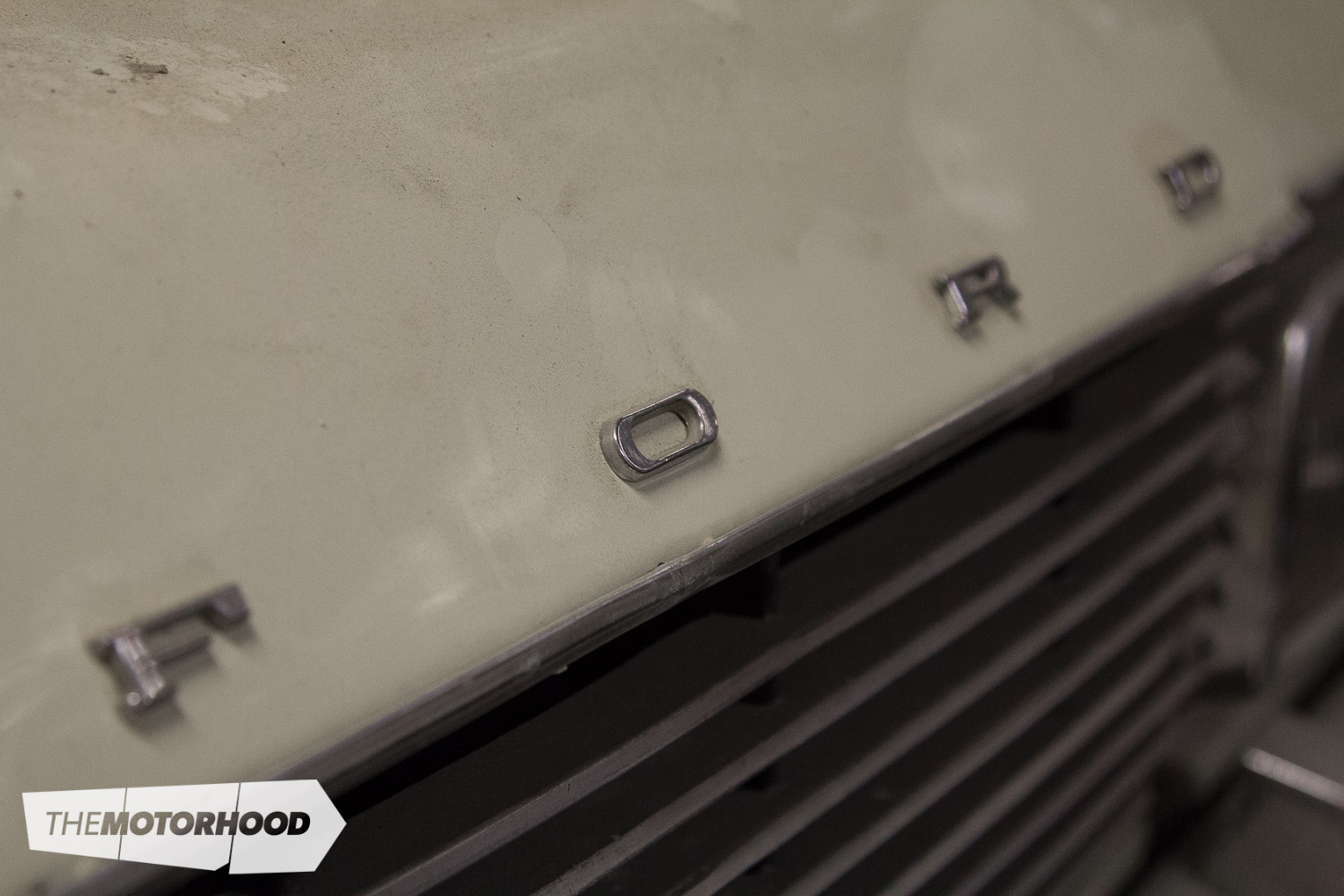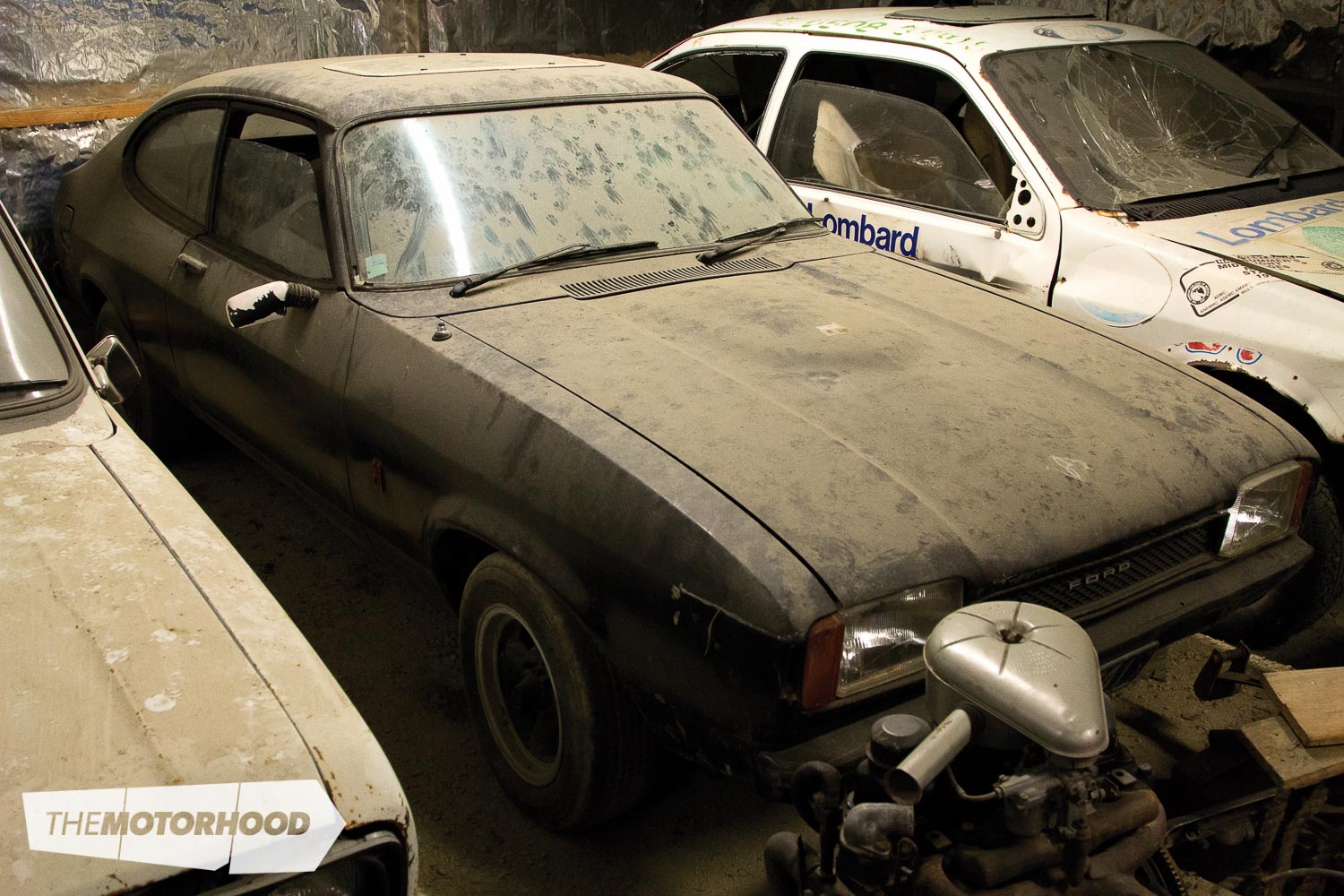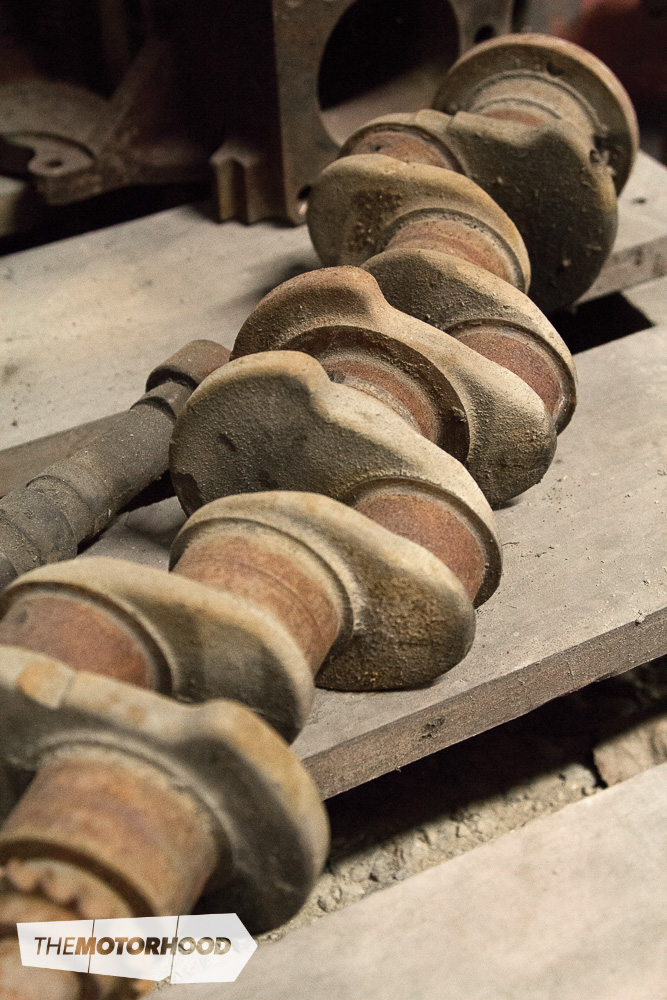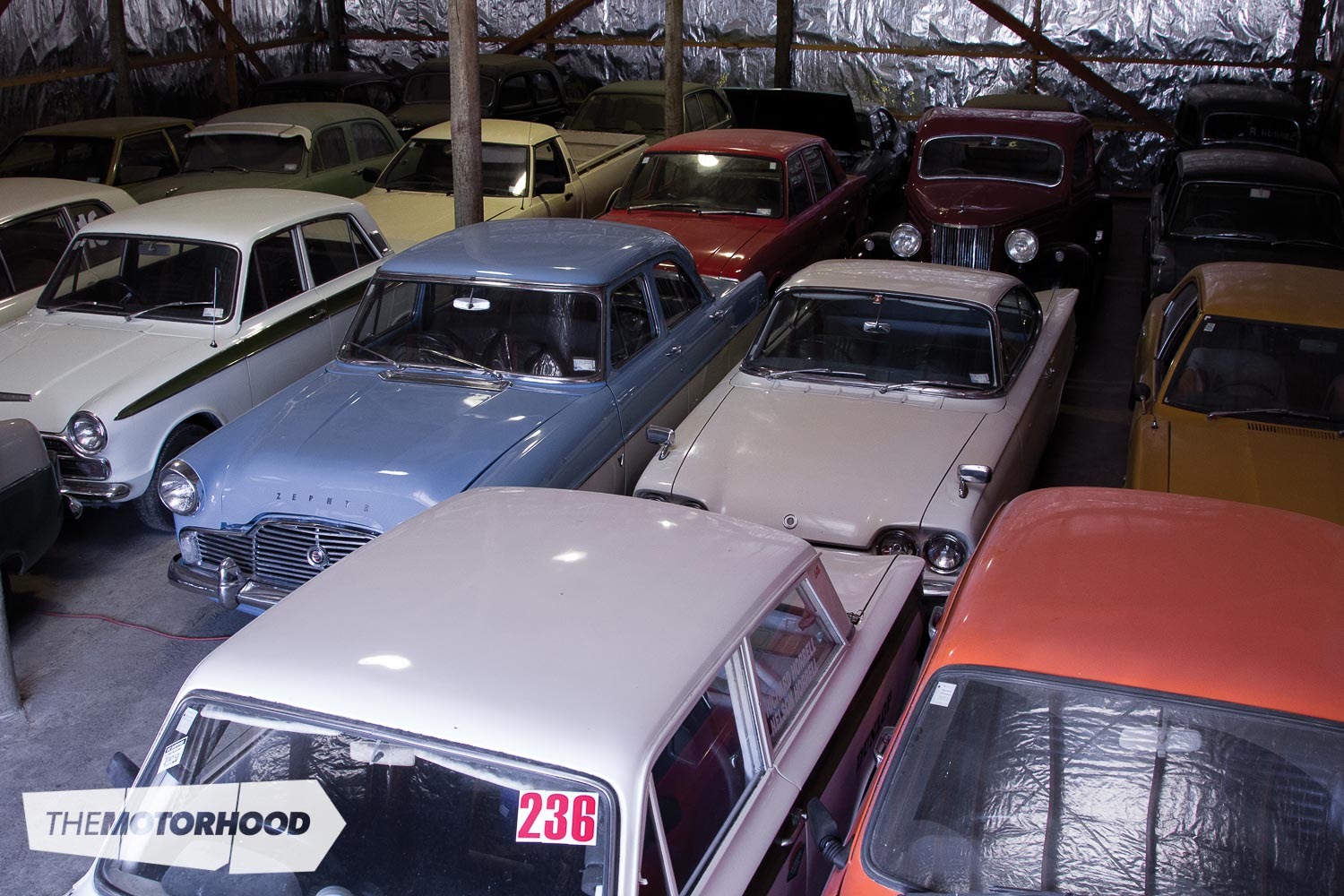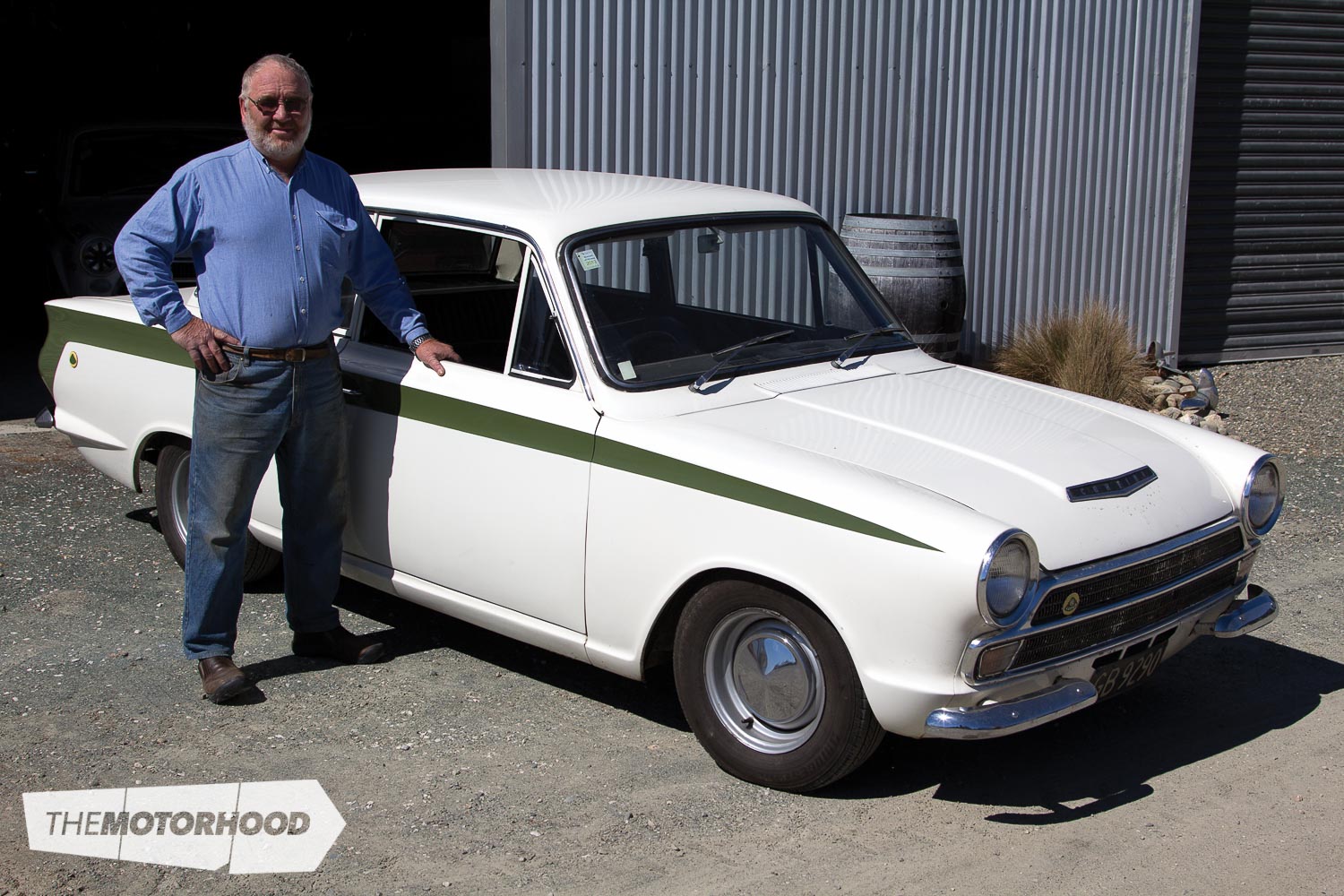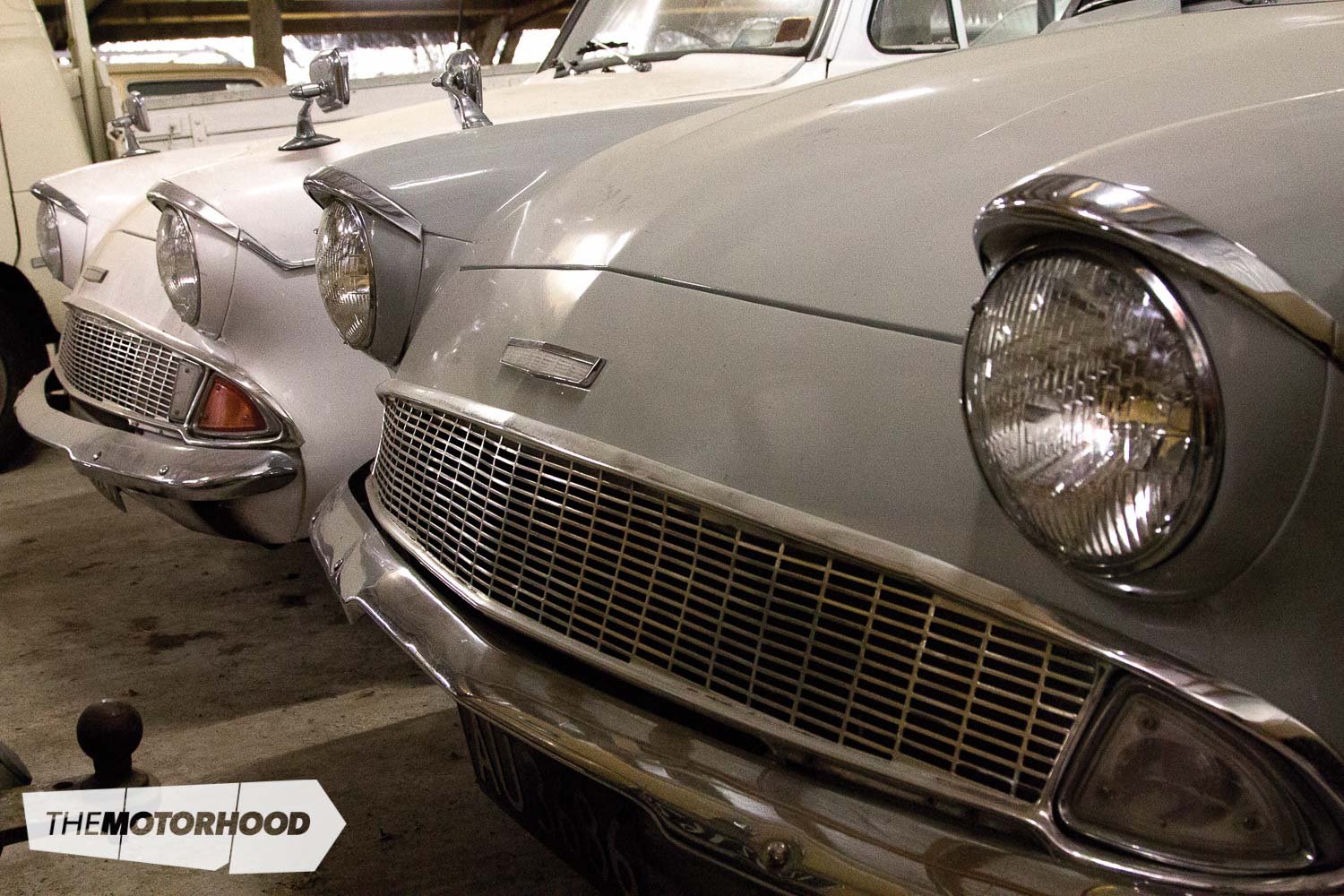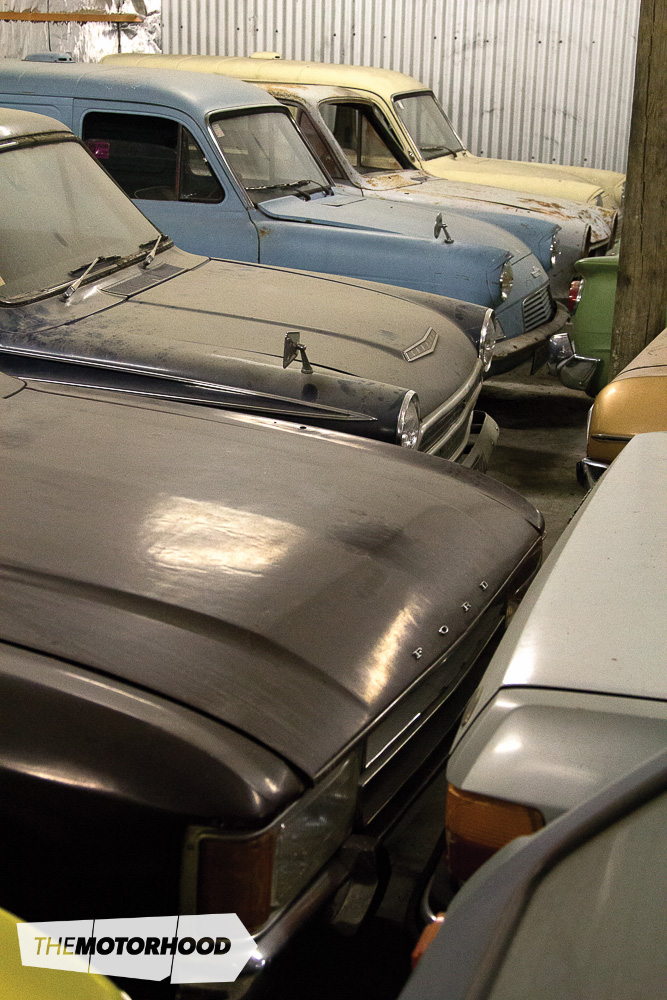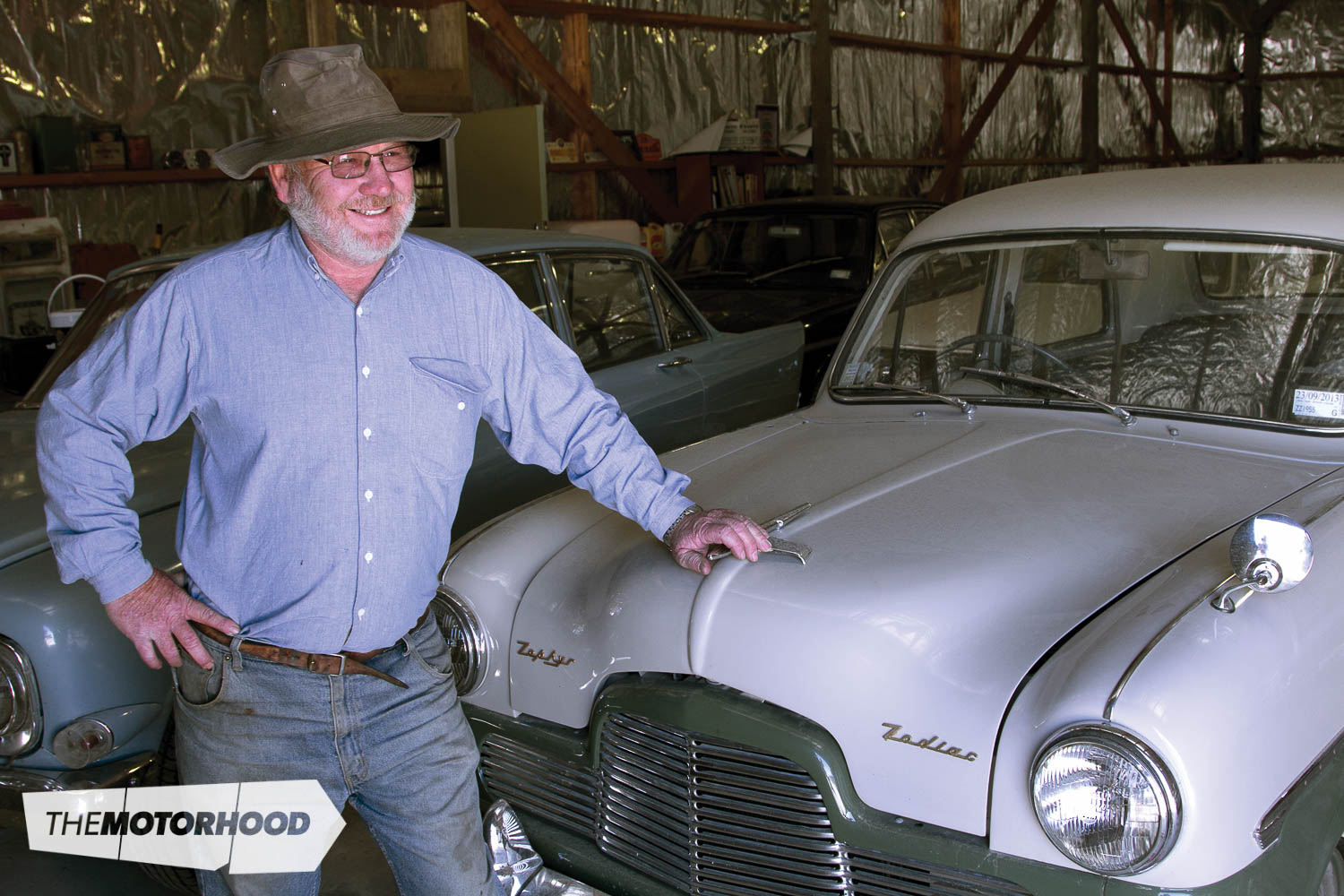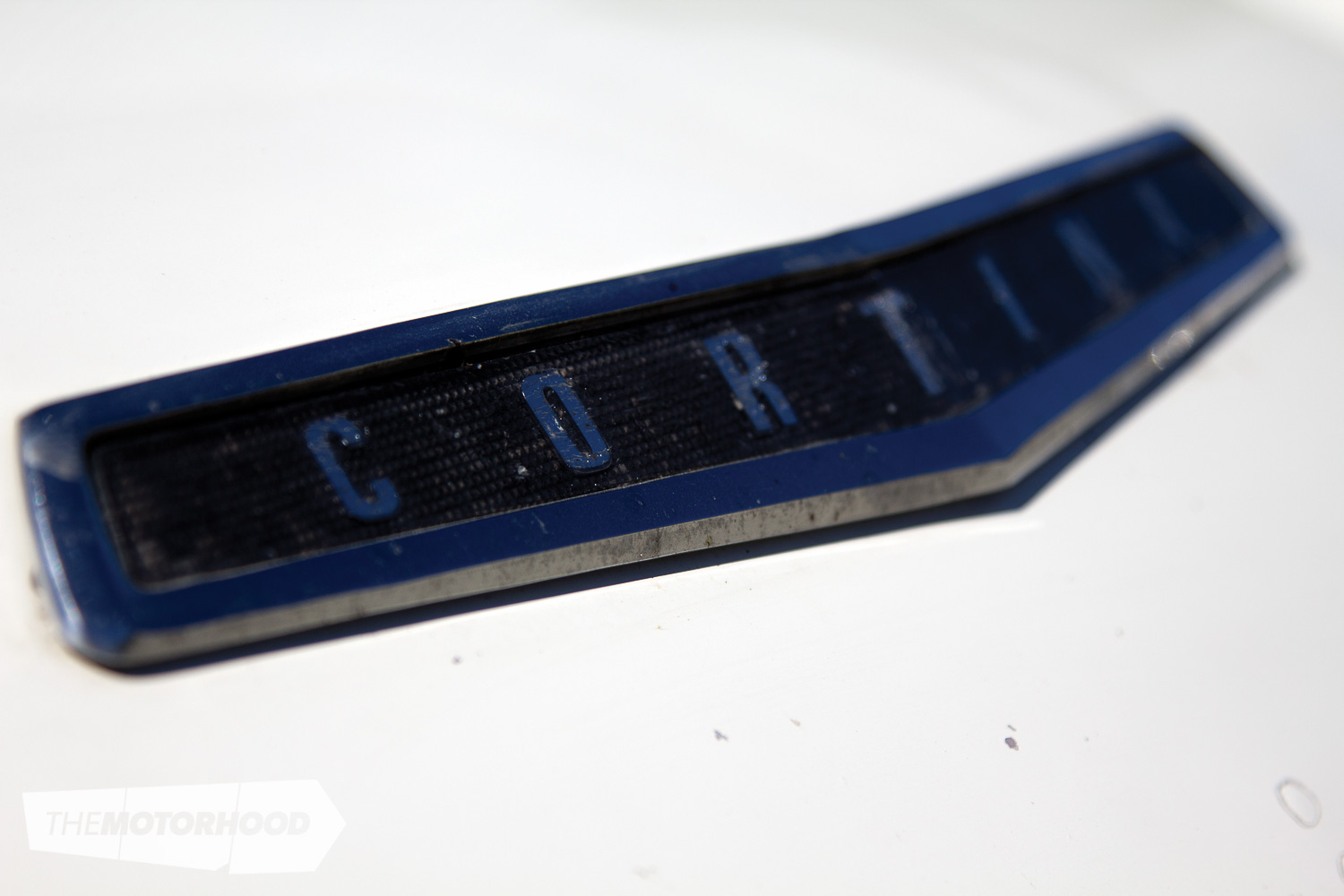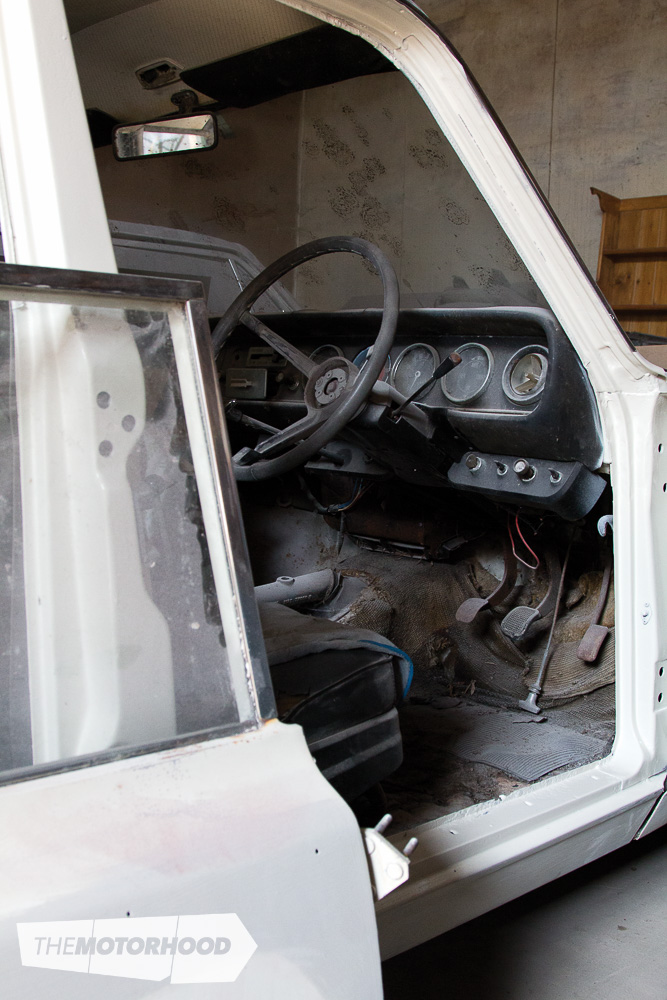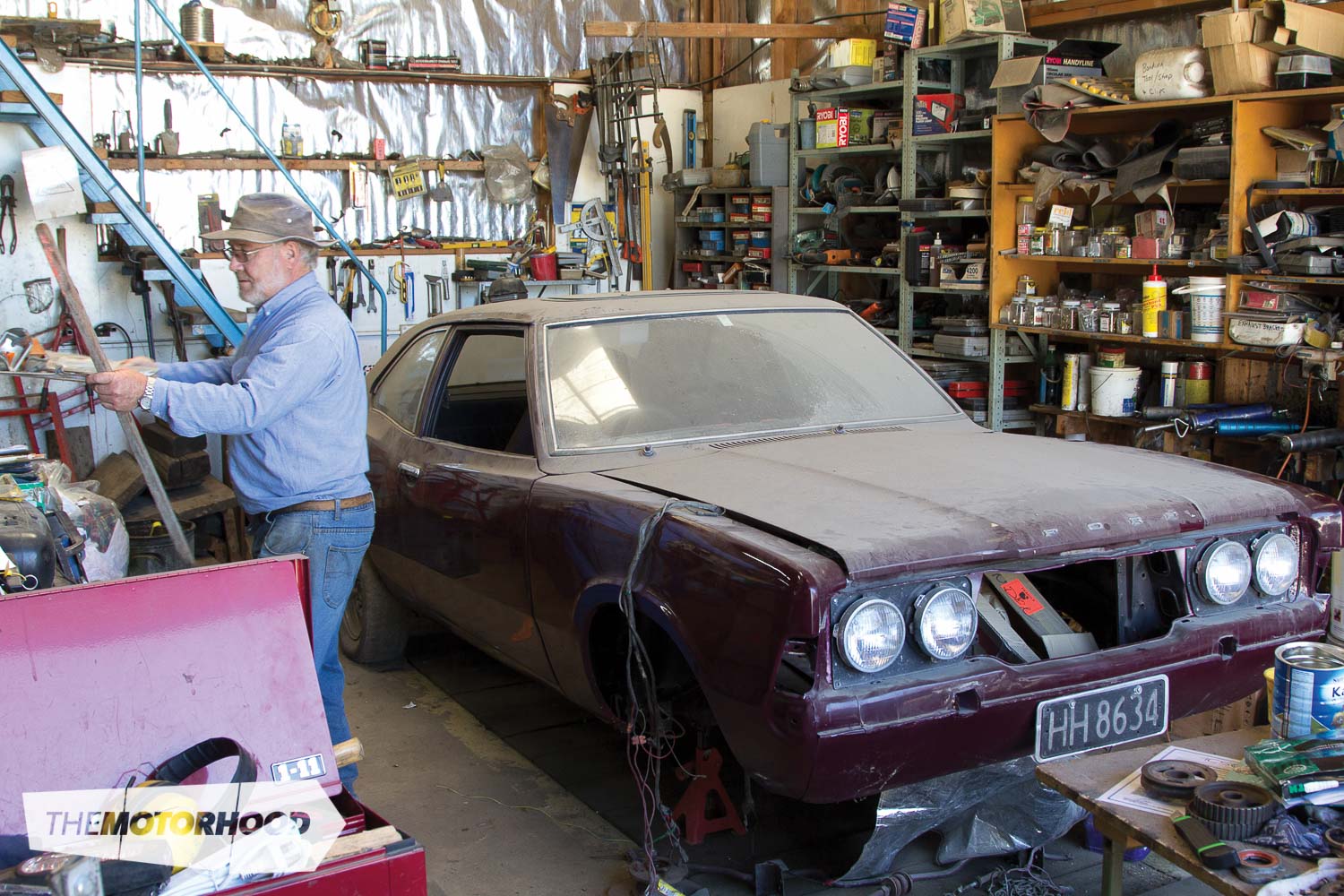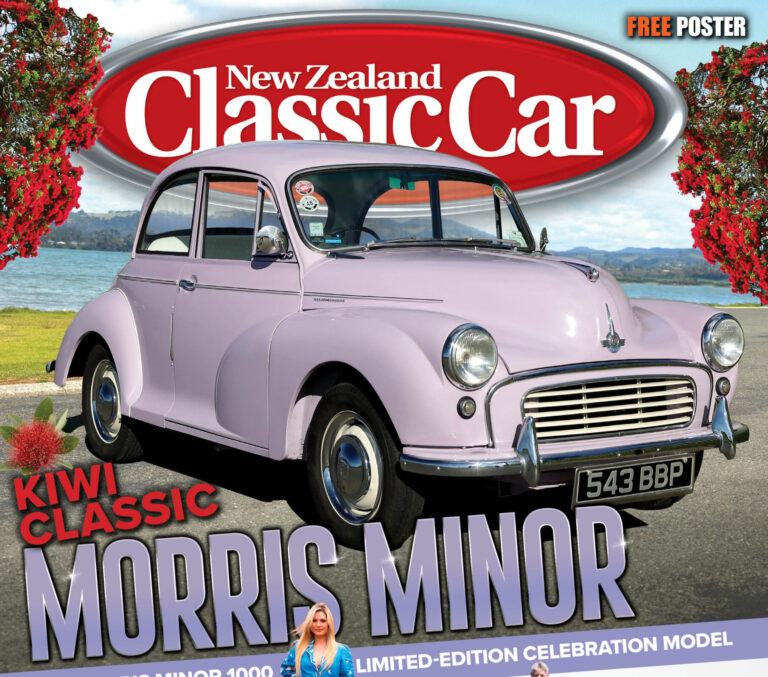data-animation-override>
“We stopped off in Motueka to check out Richard Horrell’s collection of classic Fords”
As a young Motueka lad growing up on a tobacco farm, Richard Horrell spent many hours with his brother and neighbour hotting-up and modifying Cortinas and Anglias. These self‐taught mechanical skills would later prove invaluable for Richard’s career in horticulture – growing apples, kiwifruit and grapes down the road from where his father’s tobacco farm once was. “It’s a necessary part of my trade being able to tinker with tractors and farm machinery,” Richard says.
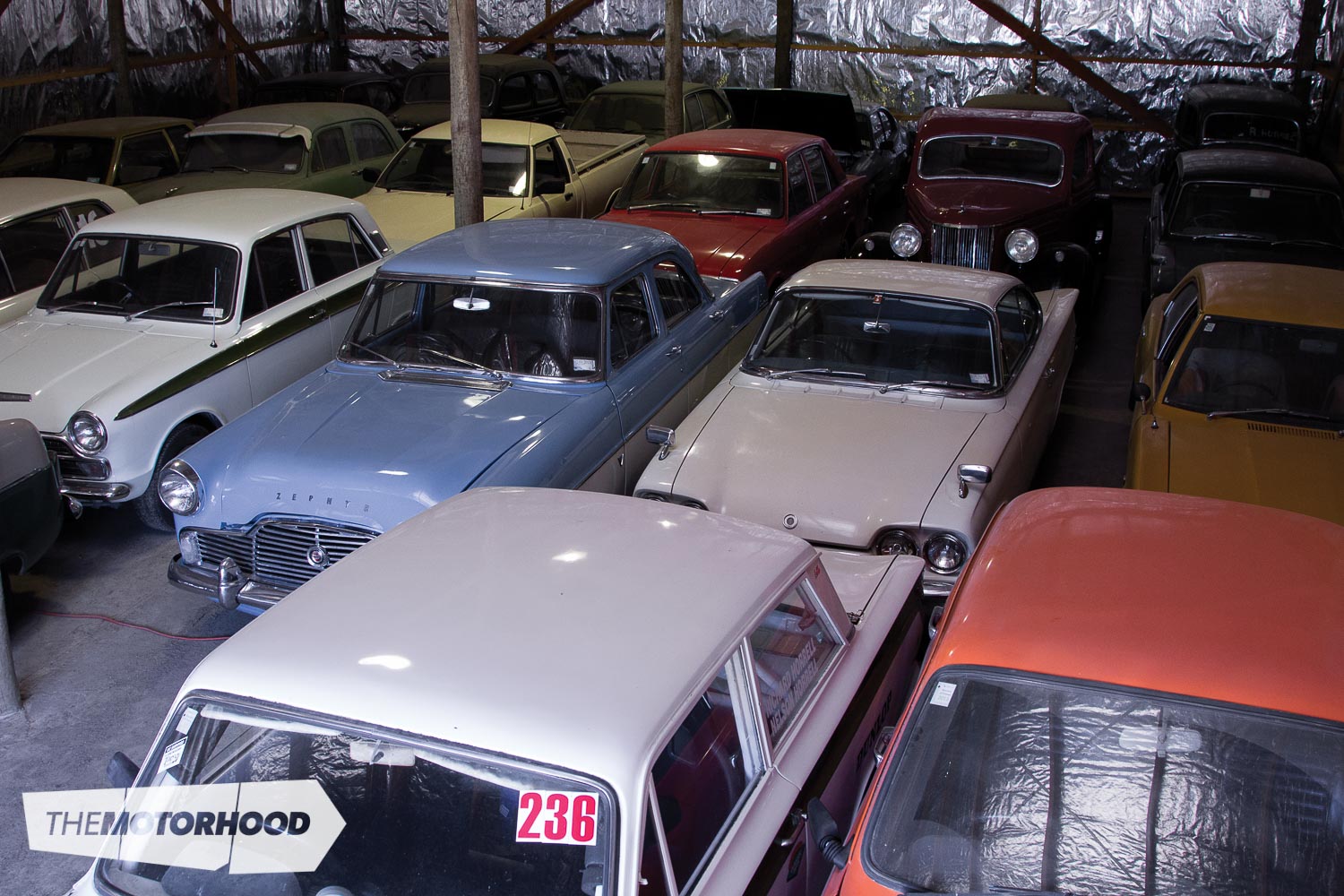
The farm machinery hasn’t been the only benefactor of these skills, as the contents of a large shed on the property can attest.
First classic car
Richard’s earliest car was a hand-me-down 1963 Mini deluxe that set him off on the road to university. A couple of cars later, after deciding university wasn’t for him, and with his partner, Sue, now in the co‐driver seat, he purchased a Cortina MkII.
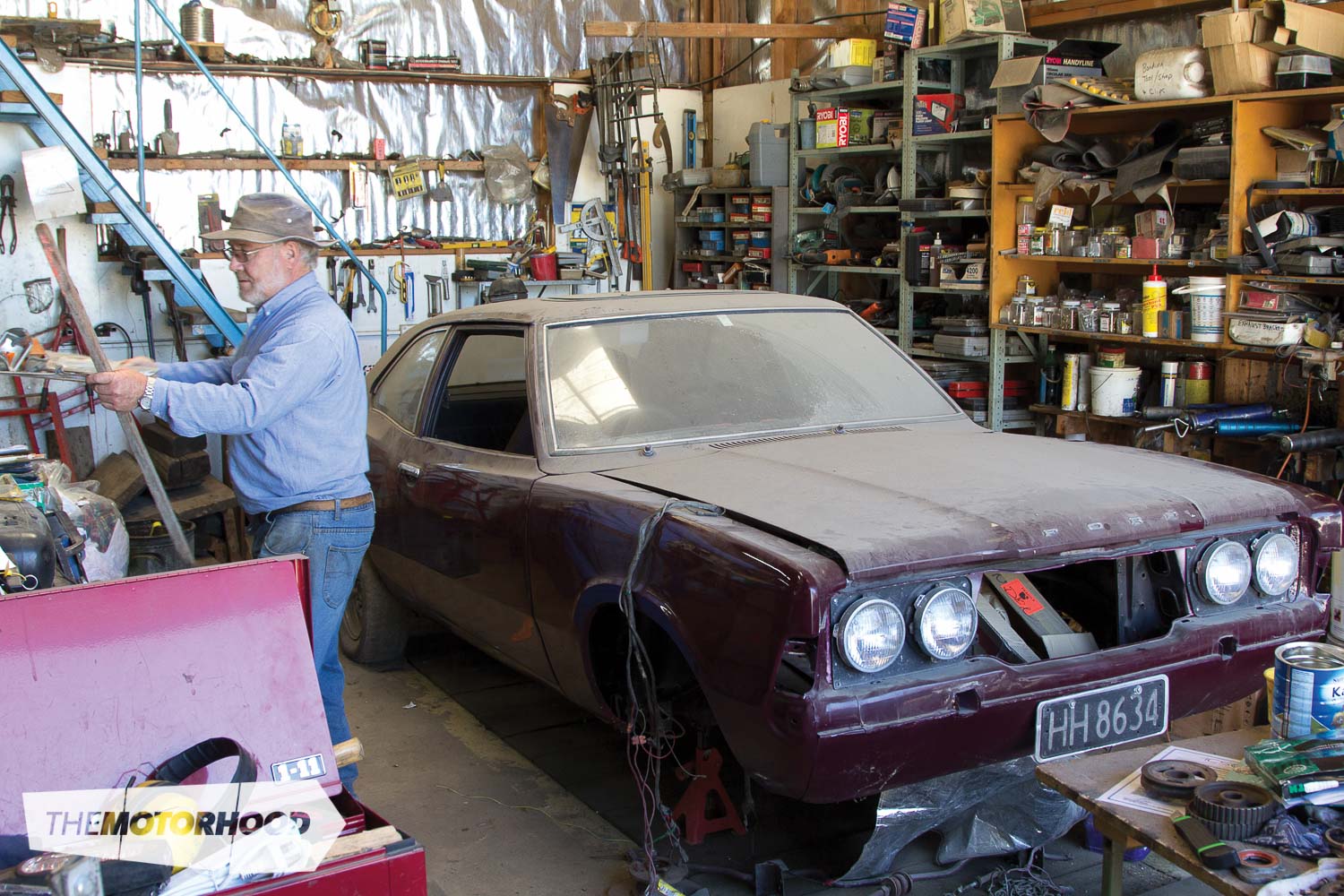
Once his four children came along a move into a humdrum Mitsubishi van became a necessity, and it seemed Richard’s motoring future was set to be practical rather than exciting.
However, while engrossing themselves in their busy Motueka orchard and raising children, friends would often regale the couple with stories of the times they spent rallying with classic car clubs. Not being ones to miss out, Richard and Sue decided to purchase their own classic car to get in on the fun.
They already held English Fords in high regard due to what Richard considered their superior craftsmanship, so little more than a quarter of a century ago he began trawling adverts in search of his own classic car, and very soon he discovered a four-door MkI Cortina GT in Auckland. It would be his first classic car purchase.

“It’s a great little runner that still goes today, although the motor is tired,” Richard says. “All I’ve done to it is respray it because of bubbles appearing in the paint. It’s been a very reliable car.”
He had no idea then that this would ignite his collector’s gene. “It basically mushroomed from there, I would find another, then another, I didn’t realise then that collecting is such a disease!” he says.
With a sister that collects teddy bears and a brother in Southland with a large tractor collection, it really would appear collecting is in the Horrell family genes – and Richard has passed them down to his twin daughters, who have what is possibly New Zealand’s largest collection of Sylvanians (for those unfamiliar with Sylvanian Families, they’re anthropomorphic animal figures).
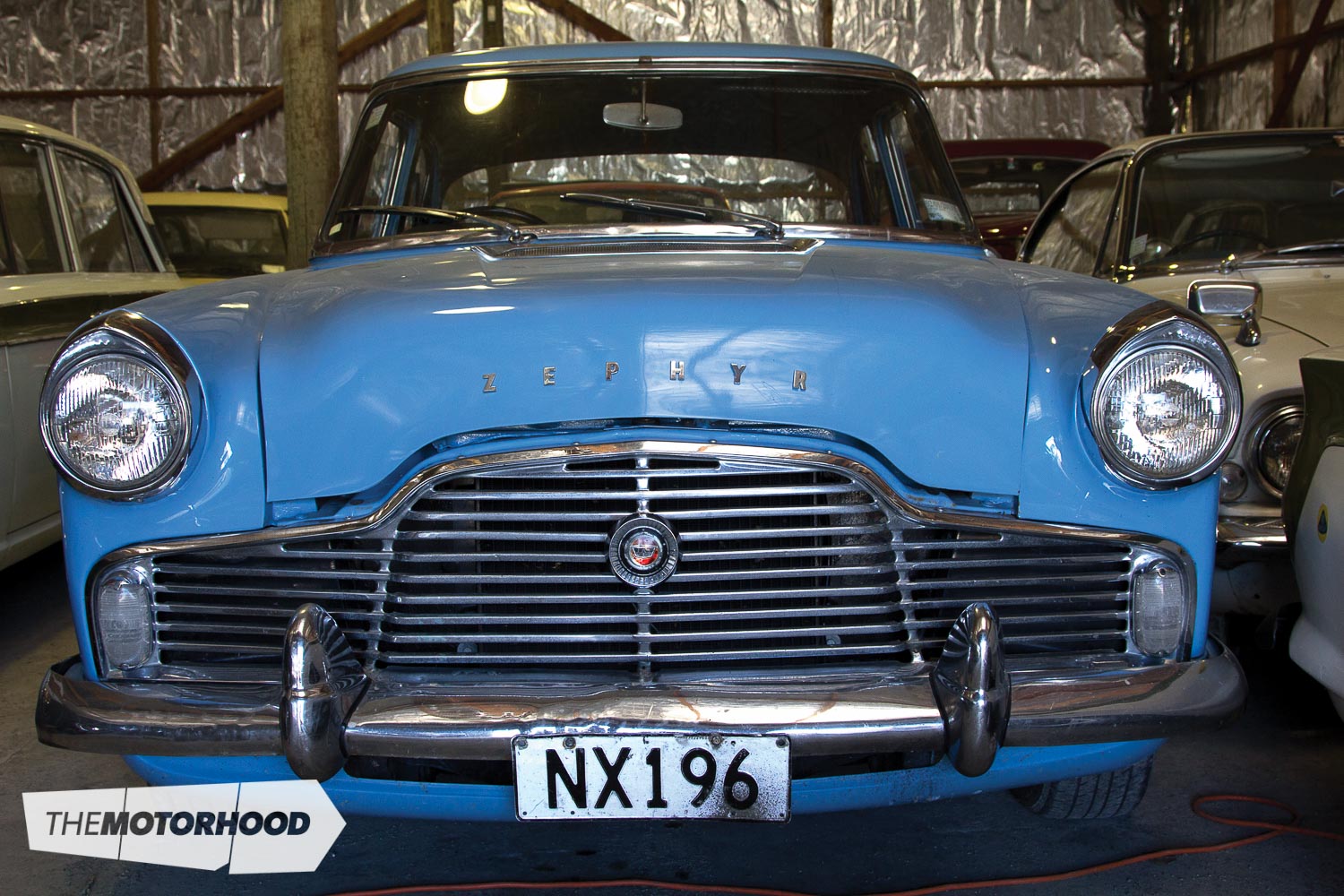
Ford fleet
Today a purpose-built shed on the Horrell farm houses Richard’s 58 classic English Fords. Among the Fords there is a token Japanese convertible, because “Ford makes rubbish convertibles,” according to Richard.
The oldest Fords within the collection are a 1949 Prefect and 1950 Pilot, while the most recent is a 1990 Sierra ute.
By his own admission Richard is by no means a concours-condition collector. “A few dings here and there or torn upholstery don’t worry me, I prefer to have nice original cars that can get WoFs easily.” A core of about 15 cars are kept regularly maintained, warranted and registered.
The collection contains some real rarities when it comes to Fords resident within our shores – including what could be the only Consul MkV in New Zealand, a Ford Taunus two‐door coupé and possibly New Zealand’s only Granada MkII estate, among other potential lone rangers.
However, Richard’s Lotus-Cortina MkI holds the claim of most valuable, and this car, along with a racing replica, are the most highly prized within Richard’s collection. The racing car is no stranger to the racetrack, having recently been on an outing to Ruapuna.
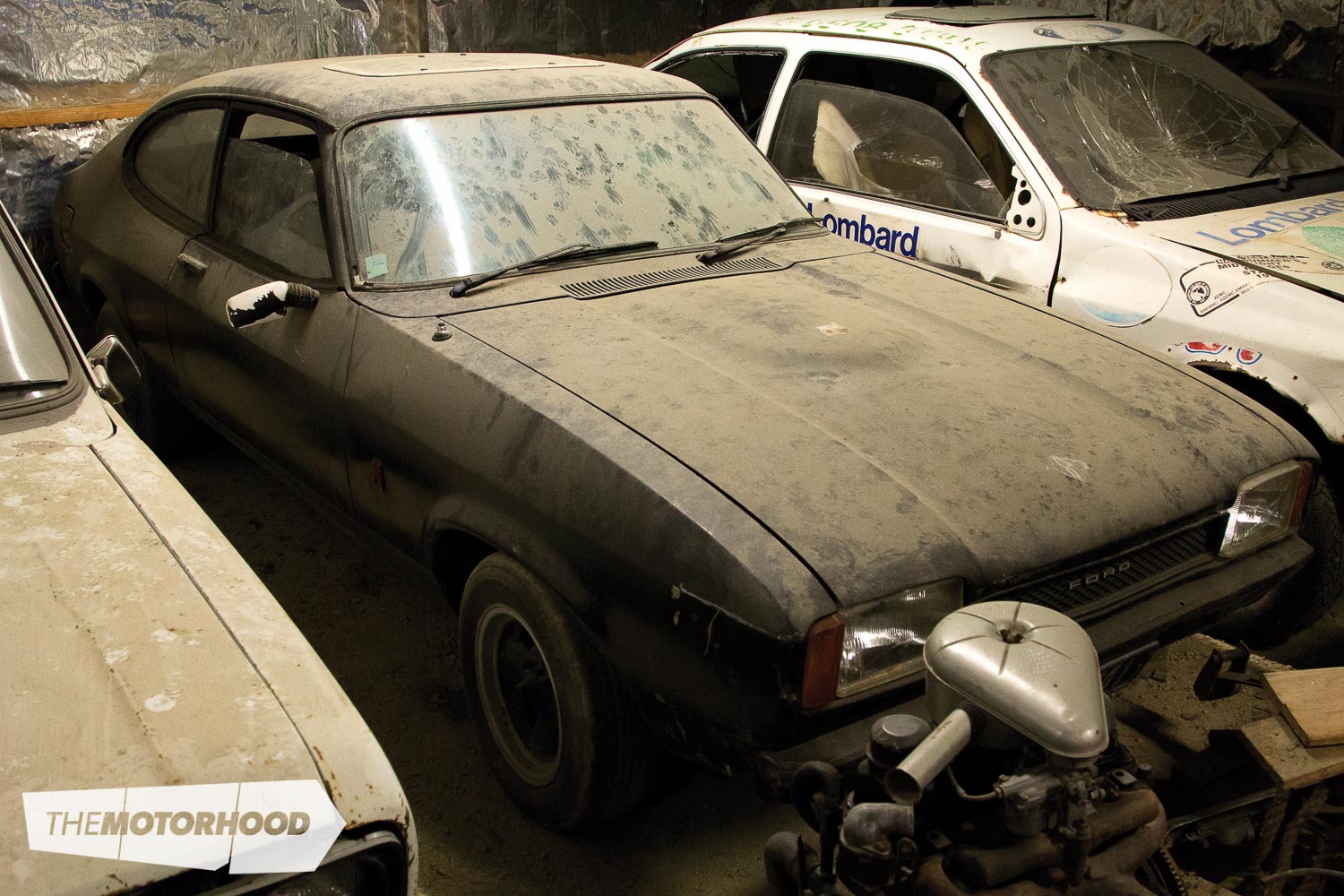
It’s the preservation of Kiwiana that gives Richard a justification for his collecting. “I believe I’m doing my bit. Although I tend to collect the rarer ones I still have the standard ones in there as well, the cars everyone grew up with.”
Leading a busy life in the Motueka community means Richard’s car collection can’t monopolise his time. He’s been an active member of the local judo club for 50 years and that, plus a stint on the council and as an active Justice of the Peace all while running a large business ensure he has to be selective when its comes to restorations.
“I don’t bother with cooking-class cars, I only restore the rare ones, as restoration is extremely expensive, and I do it as much as possible to the original specs.”
Although our high dollar makes buying the parts easier for Richard, it’s a double-edged sword, as being involved within a primary export industry means the current economic situation has also reduced the value of his overseas earnings.
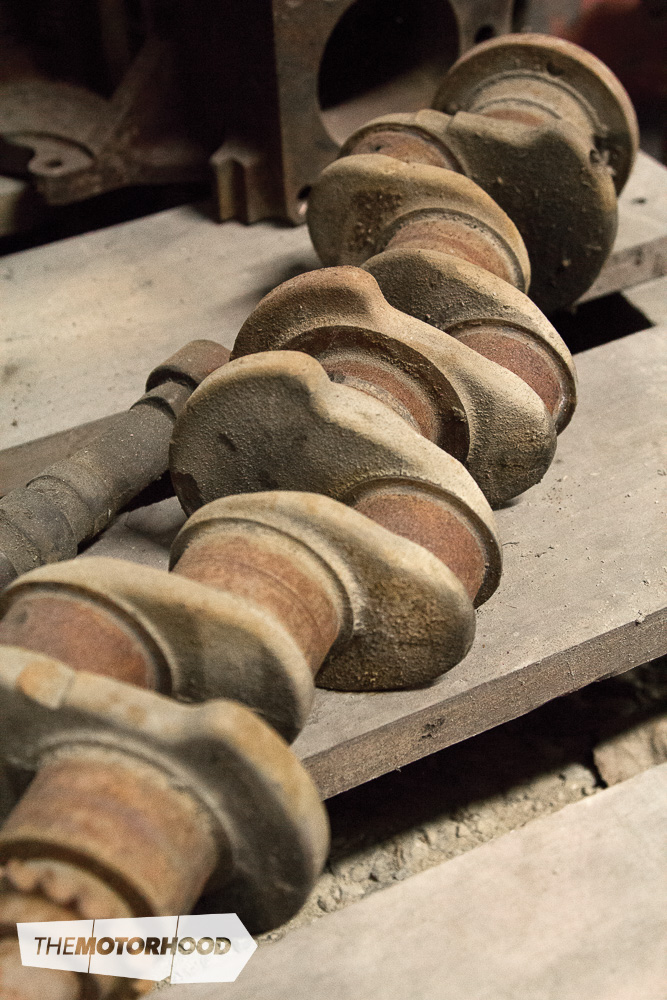
Project cars and classic rallying
Currently undergoing a cosmetic restoration – the first he’s undertaken and a “bit of a trial” – is a very rare ford Corsair Estate GT. There are very few left of them worldwide, and ultimately Richard intends to display this car. The Corsair Estate GTs were handmade, standard saloons being converted into station wagons by Abbots, the British coachbuilder and hearse maker.
The next car earmarked for restoration is a Cortina MkI. In this part of the world, part of the Cortina’s legend came from its legendary victories at Bathurst for the Armstrong 500 in 1963, 1964 and 1965. In keeping with that, Richard plans to build a Bathurst replica – “It’s a rare shell, not many in New Zealand.” As he’s already acquired most of the parts – bar the special fuel tank and the air intakes – this rebuild is sure to be impressive.
The enthusiasm Richard has for his rebuilds is clear, though if the subject of rallying is broached, it’s quickly evident this is where the core of his passion for cars and motoring resides. “It’s definitely the driving of my cars that is my true hobby, I get a lot of fun out of classic car clubs and I’m an active member of six.”
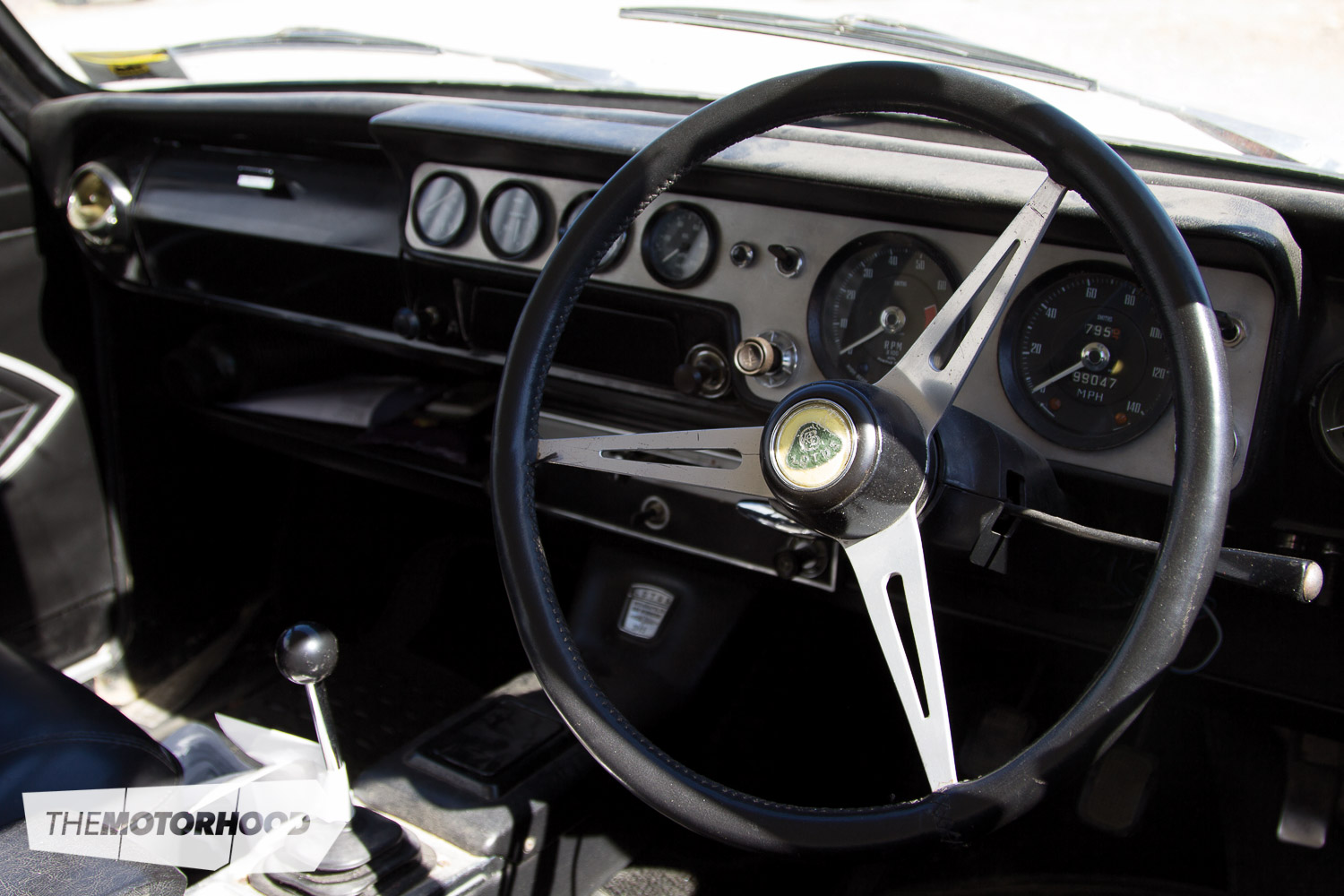
Also an active rally participant, Richard competed in Targa NZ three years on the trot. Those rallies were a family affair, his brother and himself building their cars, a brother-in-law as the team’s mechanic, and his wife, Sue, also in the team. Richard competed in his Lotus-Cortina for one Targa, switching to his brother’s more modern Nissan for the following two years.
These days, when it comes to driving his cars it’s not so much about the speed as Richard prefers to use his Cortina 1600E for rallies.
“It’s comfy, with lovely seats.”
Given the amount of kilometres he and Sue clock up each year, it’s no wonder comfort takes a priority.
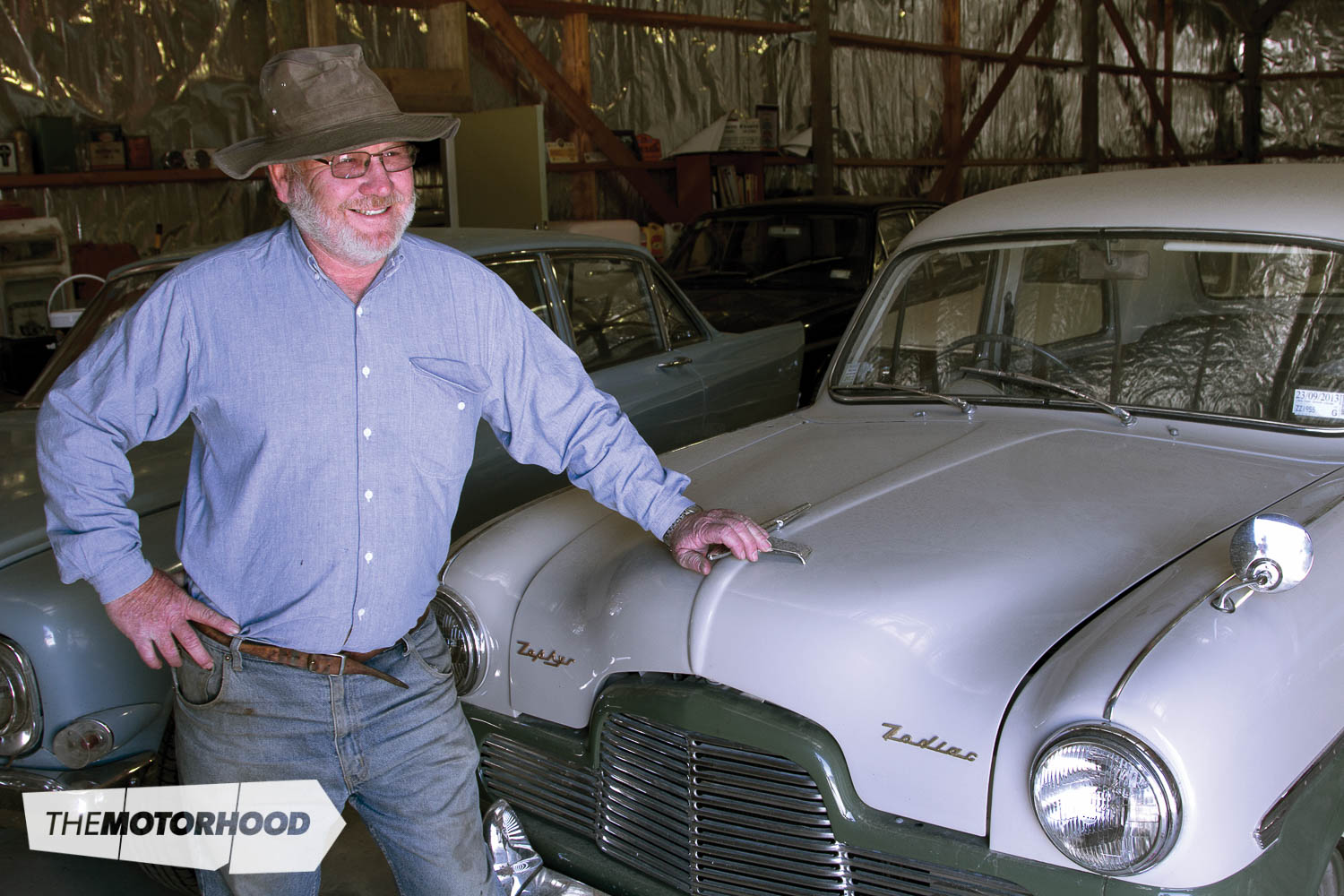
Future Fords
As winter is a quiet time for horticulture, Richard and Sue use it as an excuse to cover vast distances. In the last two months alone they’ve travelled over 8000 road kilometres. “For us going on rallies, the big appeal is the camaraderie with the other participants and the sights you see.” They have recently returned from an Australian rally where they clocked up 4200km in their MkI Cortina GT. This car resides in Australia and in the last six years has taken them all over the immense country – they’ve now completed 24,000km kilometres in it. Richard’s Cortina was the only classic car on the rally and performed with the unmistakable charm and character these cars just seem to possess.
“My 49-year-old Cortina four-door kept up with all the other cars, no problem.”
Upon their return to New Zealand, the couple revved up their Lotus Cortina and joined the annual Trans-Alpine Lotus Rally, clocking up a further 2000 or 3000km – including a trip over the Lewis Pass as the rally crossed the main divide.
Over the years they’ve also rallied in Europe, mainly in a Capri they own in the UK, a car their son, Brendan, also used while living there. June 2013 saw Richard and Sue return to Europe to rally for the first time in a decade. Driving their Lotus Cortina MkI, they plan to join up with like-minded Ford collectors on a pilgrimage to the north Italian town of Cortina.
This article was originally featured in the May 2013 issue of New Zealand Classic Car. Grab your print or digital copy of the magazine below:
